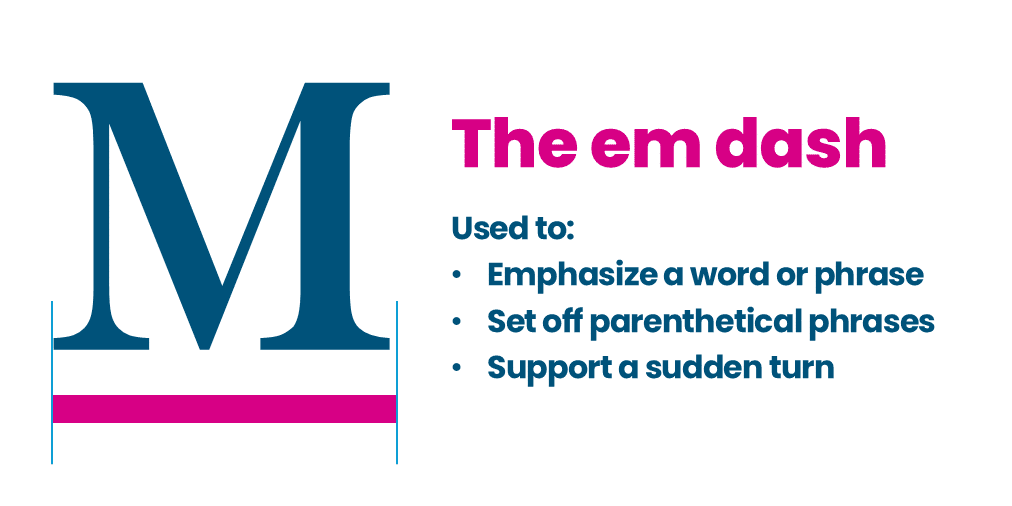
We stand with the em dash
Key takeaways:
- Em dashes in writing are being mistaken as a sign that AI was used.
- Professional writers defend the em dash as a punctuation symbol like no other.
- Investment communications have long featured em dashes—and such use should continue.
We can remain silent no longer.
Since the start of the year, we’ve been hearing some nonsense disparaging the em dash as an “AI hyphen.” Some have suggested that its appearance in online content is a flag that the words were written by ChatGPT. Further, it’s been recommended that writers abandon their use of the em dash at the risk of their work being devalued.
No. No. And no.
We’re here to express our full-throated support for the em dash, and to vow to do what we can to foster its appreciation and continued use.
There may be some quibbling about whether it should be separated by spaces, and some hold their noses at the double dashes that stand in when the word processing software doesn’t make the conversion to that beautiful, single, uninterrupted line the width of an M. Regardless, most professional writers hold a special place in their quiver for the em dash.
“The dash captures something about natural inflections of speech in a way that other punctuation doesn't.”
J.T. Bushnell
"Aesthetically elegant," the dash "captures something about natural inflections of speech in a way that other punctuation doesn't,” J.T. Bushnell, a senior instructor at Oregon State University's School of Writing, Literature and Film, has written.
Over the ages, important writers no less diverse than Emily Dickinson, Mark Twain, F. Scott Fitzgerald, and Friedrich Nietzsche have favored the em dash.
Getting to know the tools
The 2025 misunderstanding and mis-labeling of the dash as an AI hyphen is a result of inexperience, posits one much-quoted poster on LinkedIn. “No, the em dash is NOT a sign of ChatGPT—you just haven't been writing long enough to recognize the trend.”
AI systems train on human writing samples—of course, its synthesized responses are going to include em dashes, others say.
There’s another consideration, according to Rolling Stone’s excellent analysis of the controversy. It might be that “suspicion of the em dash also speaks to our mounting paranoia over automated communication.”
For our pocket of the world, some of the best writers in the investment industry regularly have put the em dash to work. They include:
- Warren Buffett
- Howard Marks (Oaktree Capital)
- Ben Carlson (A Wealth of Common Sense)
Journalists include:
- Jason Zweig
- Christine Benz
- Dave Nadig
- Paul Krugman
Not to mention most investment publications including the Wall Street Journal, Financial Times, Barron’s and Bloomberg. More broadly, the New York Times in 2012 described the dash as the most versatile piece of punctuation.
Em dash-using asset management firms include Goldman Sachs, State Street, ARK Invest among many, many others.
Susan Weiner, whose very business is called Investment Writing and who has trained countless financial advisors over the years, fully approves, as expressed in her 2018 blog post. Read it to get a sense of her commitment—she describes it as love—and to refresh your understanding of the distinction between the em and en dash, the latter thus far unscathed by today’s kerfuffle.
Having said all that, we recognize that some online movements take crazy turns. In the worst imaginable scenario, some well-meaning marcom manager right now may be thinking about banning em dashes because of their recent ill repute. It’s conceivable that some summer intern is about to be tasked with removing them from existing pieces.
To you we say, please don’t. Hold the line. Too much rides on this to succumb. The Internet haters will eventually move on—and then we’ll all be able to exhale.
Subscribe.
Receive the latest news and insights from Lowe Group.